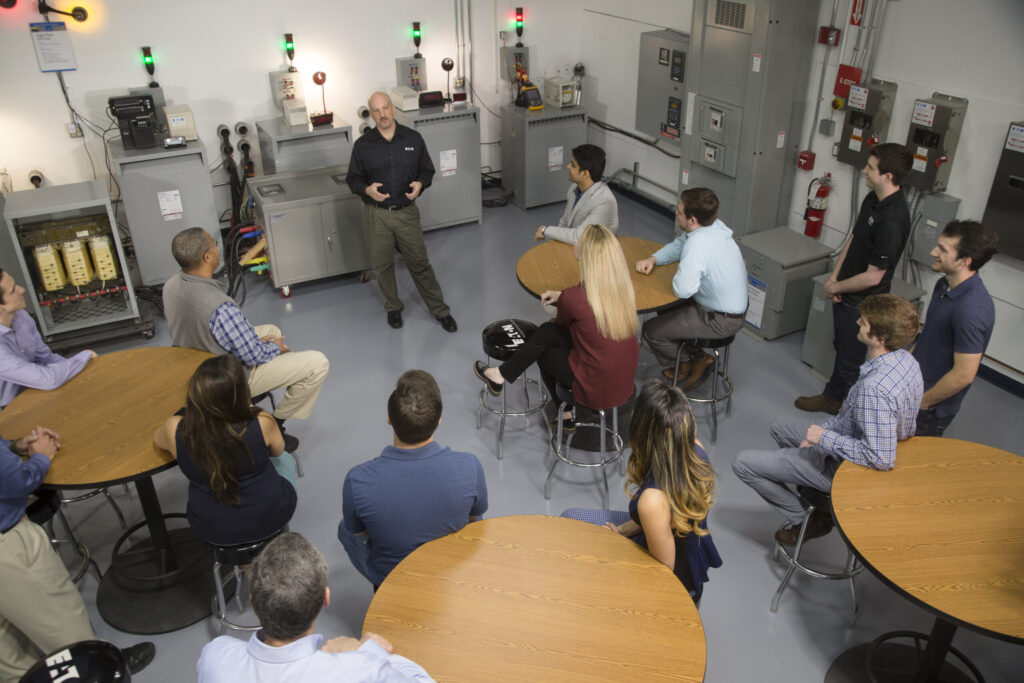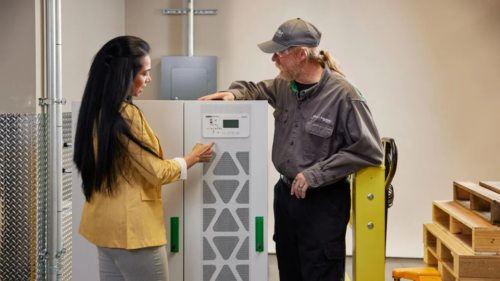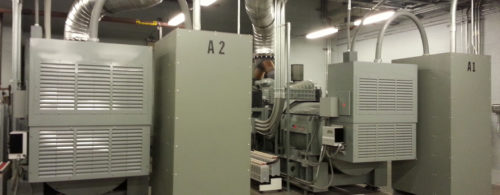Your questions answered: Harmonics solutions for water and wastewater applications
Technical recommendations for reducing harmonic distortion and improving system capacity and improving system reliability while evaluating installed costs.
Problems associated with harmonic distortion are well understood for many power system applications; however, finding the right solution is challenging. Because of the significant use of variable frequency drives in water and wastewater applications, understanding the appropriate solutions for your application is important. There are at least 10 different technologies and strategies to choose from, each with specific technical and economic advantages.
During a webcast on Sept. 12, presenters from Eaton Corporation provided technical recommendations for reducing harmonic distortion and improving system capacity and improving system reliability while evaluating installed costs.
Additional questions were answered by Dan Carnovale, Director, Eaton Experience Centers, Eaton Corporation.
Question: For what size drive would you consider 18 pulse a good financial choice?
Answer: At about 150 HP or more, the cost of an 18-pulse drive is more cost effective than a 6-pulse drive with additional filtering to compensate to an equivalent harmonic level compared to the 18-pulse drive.
Question: Does PV generated power contain harmonics?
Answer: PV/solar inverters often have some voltage distortion from the converter, but most are relatively low magnitude. The frequency of the harmonics are usually higher orders from the pulse-width-modulated controls.
Question: How will harmonics affect natural cable or bus in electrical system?
Answer: 3rd harmonics accumulate on a 3 phase 4 wire system neutral. The 3rd harmonics on the neutral are additive (i.e., if you have 100A of 3rd harmonic on phase A, 80A of 3rd harmonic on phase B and 90A of 3rd harmonic on phase C, you will see 270A of 3rd harmonic on the neutral). Coincidentally, if you have 100A of 60Hz on phase A, phase B and phase C, you will have 0A of 60 Hz on the neutral because the 60 Hz currents are all 120 degrees apart while the 3rd (and odd multiples of 3rd, i.e., 9th, etc.) are all in phase and additive from each phase.
Question: Is split AC in home one example for voltage distortion?
Answer: Mini-split air conditioners in homes MAY be harmonic producing loads as most of these units have a VFD and would produce harmonic currents.
Question: What mitigations can we do at the utilities transformers to solve the harmonics?
Answer: At the secondary of the utility transformer, you can use many of the typical harmonic solutions to reduce voltage distortion by offering a low-impedance path — harmonic filters, active filter, pairs of phase shifting transformers, etc.
Question: In our thermography surveys, we have seen very hot 200F to 300F filter/choke transformers connected to VFDs. Is this normal? Or does it just show that the filter/choke is working hard to filter out the harmonics?
Answer: Line reactors are designed to run hot — some hotter than others. I would check with the reactor vendor to see what they expect as “normal.” Reactors, like transformers, have an X/R ratio that is the ratio of inductance to resistance, and the higher the resistance, the more losses and the more heat.
Question: Is there useful information in the IEEE 519-1992 version that would make it desirable to keep/get the 1992 version?
Answer: I personally don’t believe so. I’ve looked through it in detail, and most of it was things like notch depth and more theoretical/mathematical parts that aren’t really relevant to solving the issue of harmonics for the general application. The newer standards get to the key points and summarize well what is important.
Question: With a passive filter that has a backup generator, the VFD cabinet manufacturer will introduce a bypass contactor. Will that bypass during a generator, or just at a certain speed? How do you keep the PF from going leading at low loads, any loads, and trip the generator?
Answer: With older UPSs, this was a very typical problem, and the passive filters were shut down on the generators at 35% load. A fixed filter (drive dedicated filter with a large capacitor) can be turned off with a contactor on the generator, but sometimes if you need filtering on the generator, you can’t afford to have the filter off. At very light loads, yes, turn off the filter, but at heavy loads, accommodations should be made and tested/modeled to ensure proper operation. By the way, a generator can take a leading load but not too far leading.
Question: In the following chain of the power system model, what is the place to tackle the harmonics: utilities substation … utilities switch … at the user yard utilities transformers … at the user yard distribution center … at user yard load (VFD, UPS, etc.)?
Answer: Great question. It depends on the goal of taking care of harmonics. If you are trying to fix the problem at the PCC, filter/correct at the user distribution center or higher. If PF correction is the issue, anywhere downstream of the utility will fix the PF, but it may make it difficult to ensure you don’t overload the filter. For very high-voltage distortion or capacity issues downstream, fix the problem at the load. I2R loss reduction is about 1-4% for both PF correction and for harmonic mitigation, so you won’t get a great payback but you can achieve some.
Question: I have recently seen a lot of installs of line filters in front of drives but have no contactors to bring in the caps. The caps are in all of the time. Is this a concern? There is a lot of wasted energy, but my concern is at lower speeds of the drives. Is the filter really doing its job?
Answer: Having a cap/filter on at low speed can be an issue with leading PF and higher voltage. I don’t think it will create too much of an issue with kW/losses, but the concern is really just 60 Hz (overvoltage and PF). For drive dedicated filters, they often do have a dedicated contactor to remove the filter branch at very light loads, especially for larger units.
Question: Are there any unique considerations for current harmonics on ungrounded power systems?
Answer: Current harmonics follow a pattern positive sequence, negative sequence, zero sequence — 1st (+), 2nd (-), 3rd (0), 4th(+), 5th (-), 6th (0), etc. In my experience, the only issues I’ve seen that are different for ungrounded or HRG systems are higher order zero sequence harmonics — i.e., maybe 39th, for example, that are capacitively coupled through the natural capacitance of the power system and coupled in from the PWM output of drives. This can show up on some HRG systems as a false issue and can be coupled into other equipment. Use a scope with a good higher frequency FFT to analyze.
Question: When would you pick a 6-pulse drive with a line reactor over an AFE drive? Is the performance the same?
Answer: A 6-pulse drive with a 5% reactor will be about 30-40% ITHD at a high load level. An active front end drive may have less than 5% ITHD across loading but may have some high frequency coupled in, but the bigger concern is that it may cost 2X the other drive. In systems that have a lot of drives and smaller drives, usually, 6-pulse with other filtering (maybe even an AHF) will be the best cost-effective solution. Also, if redundancy is used for drives, this is even more the case.
Question: Does active filtering consume a significant amount of power?
Answer: No, for passive filters. In fact, filtering, if done right, can reduce the I2R losses and reduce your kW consumption. However, for active filtering, because of the AC/DC/AC conversion, yes, filtering can add a few kW losses depending on the size of the unit. That said, active filters are mostly used for harmonics with PF as a secondary benefit, while passive filters are usually used for PF correction first and to achieve a slight harmonic benefit without risk of resonance.
Question: How can a I tell if harmonics are too high during design phase if the VFDs or computer power supplies are unknown?
Answer: With experience and measurements of similar systems. The good news about harmonics is that they are relatively predictable, and models reflect well the real world if they are done correctly. For example, you can measure the ITHD from an existing site for a 50 HP drive and get 35%, but in another site get 42% — the difference could be loading of the drive or the source impedance (i.e., drive running at 90% speed versus 70% speed or upstream transformer 300 kVA versus 750 kVA). I would be most careful of over-assuming harmonic currents on a model costing you much more money than necessary.
Question: Can you clarify the difference between I1 and Il?
Answer: I1 is the fundamental current (i.e., 60 Hz or 50 Hz) right now for instantaneous measurements — IL is used only for the TDD calculation and is determined at the maximum demand (for example, 15-minute window) during a previous month/year, etc. Since the maximum value for IL is usually higher, TDD is usually lower. The numerator is usually taken as a “high average” value of harmonic current.
Question: Do underutilized transformers also contribute to harmonics?
Answer: Very low levels of 2nd, 3rd, 4th harmonics show up on the FFT of a transformer (primary) because the magnetizing branch requires these. However, it is almost always there in the background but it is only noticeable when the transformer is lightly loaded.
Question: What are the best options for controlling harmonics generated by EC Motors?
Answer: EC motors usually have VERY high THD because they often don’t use line reactors — typical numbers may be 80% ITHD. The first step may be a 5% reactor, and then the rest of the solutions are all the same for EC motors versus drives (filters, phase shifting, etc.).
Question: Do triplen harmonics only occur in single-phase loads?
Answer: Yes, triplen harmonics only appear for three-phase systems with single-phase loads. HOWEVER, you can have 3rd harmonic currents that aren’t actually triplen harmonics flowing between phases. An example is SCR heaters connected L-L on a 480V system. You will have significant 3rd, 5th, 7th, etc. flowing out one phase and back another (not on the neutral). Triplens are considered triplen when they are on each phase to and from a single-phase load and flow back together (in phase) on the neutral.
Question: You had mentioned that overheating equipment for a small period of time may not be bad. Are there situations where harmonics could cause overheating to cycle (in other words, the equipment gets hot, then cools, then gets hot again)? Should we be concerned for situations such as this?
Answer: Certainly cycling of heating is bad for electrical equipment (depends on how long and the insulation type, etc.). The other concern I should have mentioned is that short-term harmonics may cause a single failure or issue even if they are only there for a few cycles or seconds — like a soft start that creates very high ITHD during startup or harmonic current during transformer inrush. This may excite resonance with capacitors, for example.
Question: What were the changes from IEEE 519 2014 to 2022?
Answer: The only major change was around DERs (distributed energy resources). The new standard states that if you have DERs and the combined site rated generation is > 10% of the annual average load demand, you must apply current limits from a standard with an applicable scope such as IEEE Std 1547 or IEEE Std 2800, otherwise, apply the limits of IEEE 519 (for < 10%).
Question: Is it better for the utility to use a delta-wye transformer?
Answer: In general, yes, for harmonics. You can circulate 3rd in the delta, but it doesn’t benefit the end user as far as that goes. In general, harmonic reduction from transformers is only seen upstream of the transformer. The only exception to this is downstream harmonics are affected by the impedance of the transformer and would be reduced throughout the system (i.e., not allowed to flow or choked like a line reactor), but for the winding type of any transformer, it doesn’t really affect the downstream harmonics.
Question: What is the effect of network MVA capacity (PCC)?
Answer: MVA capacity simply acts like an impedance, and the lower the MVA, the higher the impedance. Therefore, smaller harmonic loads affect the voltage distortion more on a weak source or lower MVA system. An easy way to think about it is if you put a 30 HP drive on a 30 kVA transformer and measured the downstream voltage distortion, you would get pretty high voltage distortion compared to that same 30 HP drive on a 3 MVA transformer — light load on a big transformer is not noticeable from a harmonic standpoint.
Question: For motor protection, on which side of the drive should the CT and PT be installed?
Answer: The drive will have motor protection programming built in, and generally you don’t need external CTs like you would on a normal motor protector. But if it did require external CTs, it would be on the output because the drive decouples the motor from the source at the DC link.
Question: For small motor, does 18-pulse drive avoid line reactors?
Answer: 18 pulse on very small drives may not be cost effective, but if you do apply an 18-pulse drive on any motor, they usually use an internal reactor as well to gain that additional impedance benefit. In general, though, if you use 18 pulse, you don’t need an additional line reactor.
Question: What’s a good “time span” that can cause issues with sensitive equipment?
Answer: The IEEE 519 standard, for 95th percentile of measurements (i.e., most of the normal time), you would follow the tables directly in the IEEE 519. For short-term 10 minutes or less, you can exceed the tables as much as 1.5X, and for 3 seconds or less, you can exceed the tables by as much as 2X.
Question: Can harmonics generated by one VFD have an effect on the other VFD on the same power source bus?
Answer: It is possible that the drive itself can cause enough current distortion to make the voltage in front of it distorted enough to cause issues, but it is very unlikely on a 1:1 basis without other drives or influences. In fact, you can put a 10% reactor in front of a drive and cause a very distorted square wave voltage, but if you think about it, the first thing you do in the drive is convert to DC so a square wave isn’t as big of a deal to convert. If, however, the impedance is so high that the voltage has multiple zero crossings or other waveshape distortions that make it difficult for the diodes to convert the voltage to DC, then the drive may misoperate.
Question: Can you explain why harmonics increase vibration on motor?
Answer: Current harmonics follow a pattern positive sequence, negative sequence, zero sequence — 1st (+), 2nd (-), 3rd (0), 4th(+), 5th (-), 6th (0), etc. Generally speaking, negative sequence harmonics cause vibrations in motors so if you have current harmonics causing 2nd, 5th, etc. harmonic voltages, then these vibrations can result from the 60 Hz pushing the motor forward and the negative sequence harmonics resisting that forward motion, causing heat and vibration. Physical vibrations often oscillate at 2X the electrical harmonic frequency — i.e., 5th harmonic would vibrate at 600 Hz or 2 X 300 Hz.
Question: Could you clarify the impact of line impedance on the reflected noises and the net distortions?
Answer: Source impedance is in series with the harmonic currents generated by the load. Pulling harmonic current through an impedance, by Ohm’s Law, will create a distorted voltage at the same frequency. Therefore, the higher the impedance, the more the voltage distortion. A large transformer has a lower impedance than a small transformer (even if they are the same %Z) by the proportion of the kVA sizes. As far as the effect of that impedance on how much current can be drawn through it, the higher the impedance, the lower the amount of harmonic current the drive or other load is “allowed” to draw or “able” to draw through that impedance. We use the term “choke” because the impedance/reactor/reactance essentially chokes out the current (like squeezing a water hose) and doesn’t allow as much current to flow.
Question: What is the trending solution for reducing harmonics at the MV or utility-scale systems?
Answer: For MV systems, for a single drive, 24 pulse systems are the most typical solution. For large systems with multiple sources of harmonics, either fixed, switched multi-stage filters (capacitor/inductor) are used or for very dynamic MV systems, static var compensators (SVC) are used. They typically have a fixed reactor and switched capacitor in the form of harmonic filters switched with SCR’s.
Question: What’s your opinion on relaxing the VTHD from 5% to 8% in IEEE 519? Wouldn’t this extend the harmonic influence to other industrial plants connected to the utility?
Answer: I have seen systems that are good at 5, good at 8 and good at 15% VTHD, but I’ve also seen systems that are problematic at 2.5% VTHD, so it starts with what does the load like/see. As far as the neighbors, the IEEE 519 is only about the neighbors and not about how you affect yourself. That said, yes, the influence of a lot of background VTHD will potentially cause your system to have problems that it wouldn’t without them, but that may be more arbitrary than specific. You still need to understand at what level your equipment has problems if you can even determine that (which is hard to do).
Question: How does one model a system to determine if harmonics may be a problem?
Answer: SKM, CYME and other programs model harmonic currents on a power system and predict harmonic voltage distortion and resonance issues. The way it is done is that you model the impedances at 60 Hz and then “inject” harmonic loads either as individual loads or groups of loads (VFDs, for example) at a downstream bus. Once the model is complete, you run scenarios where the impedance of the power system is dynamically changed by the frequency (i.e., starts at 60 Hz, then 120 Hz, then 180 Hz, etc.), and then the harmonic currents from the loads are pushed back up through those impedances to calculate the associated voltage drop at that frequency. Once all of the dynamic load flows are done, the RMS totals for current and voltage at each bus are calculated and displayed. For variations in load, source impedance (changing to generator source, for example) or adding capacitors that may cause resonance, new cases are done and compared to the base case. Then, you can apply filters, phase shifting or other solutions and compare the VTHD and ITHD at every bus/branch.
Question: Don’t a lot of utilities use delta-wye transformers? Doesn’t that help keep it off the utility?
Answer: You can circulate 3rd in the delta on a delta-wye transformer, and that will keep the 3rd, 9th, etc. harmonics from going back on the utility, but the positive and negative sequence harmonics (5th, 7th, 11th, 13th, etc.) will go right through the transformer by the turns ratio and at the same percentage THD on the secondary and primary. In addition, that doesn’t really help you as a user, and it doesn’t guarantee compliance with IEEE 519. In general, harmonic reduction from transformers is only seen upstream of the transformer (in this case, the only benefit would be triplens). Remember that current MUST flow in a loop, and harmonics DO NOT go to ground — they flow out on phase A, for example, and back on B and C. So they go out into the utility system only to return on the other phases, right through the transformer.
Do you have experience and expertise with the topics mentioned in this content? You should consider contributing to our CFE Media editorial team and getting the recognition you and your company deserve. Click here to start this process.





